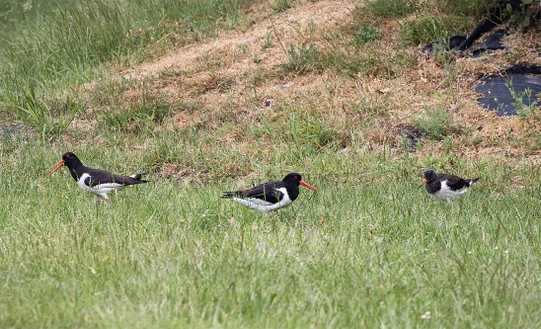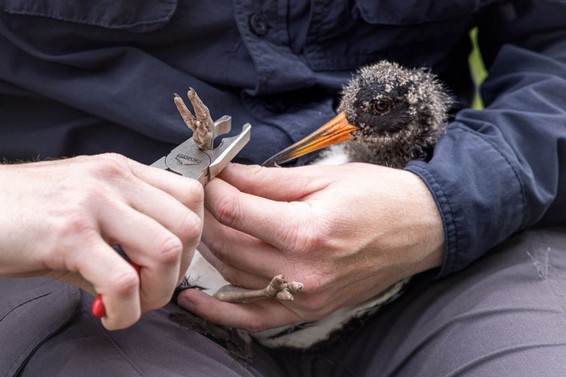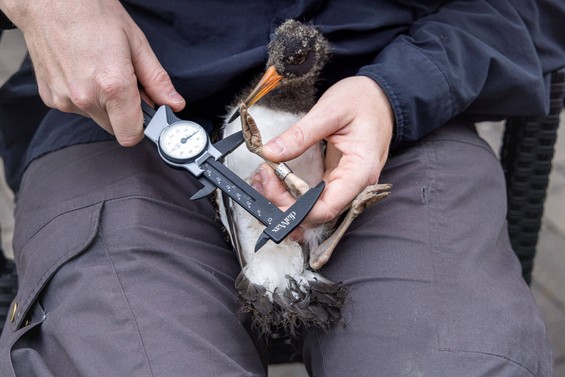TriOS supports bird protection
Published by TriOS Mess- und Datentechnik in TriOS News · Friday 15 Sep 2023
Eurasian oystercatcher chicks were ringed by a volunteer from the Heligoland Bird Observatory for scientific data collection
There's a buzz of activity on the company premises. The newly created habitat is not just a comfortable space for TriBees, but also a home for many birds. Wagtails bob around the meadow, great tits and blue tits dart among the bushes and trees. On the lake, mallards swim, and two coots take their fledglings on their first outings.

The Eurasian oystercatcher couple is back as well. These black-and-white feathered birds with long red bills discovered the company premises many years ago. Every year, when their distinctive call rings out, everyone knows they are back. The two birds like to hang out on the meadow directly between the main building and the lake. The sudden tapping often surprises the employees: No one is at the office door, but an oystercatcher struts along the floor-to-ceiling windows. Bewildered by their own reflection, they peck at the glass. However, even loud calls don't drive away the perceived competitor.
This curious spectacle repeats daily. But then, something is suddenly different. The two oystercatchers probe the meadow and diligently pull one earthworm after another from the ground. With their catch in their bills, they walk over to the gray-brown stones on the building facade. There, well camouflaged, is a small, fluffy oystercatcher chick.
Meanwhile, the oystercatcher chick has grown significantly and tentatively extends its wings. It's high time to ring the young bird! A volunteer from the Heligoland Bird Observatory captures it, weighs and measures it, and proceeds with the ringing.
With the small metal ring, the Eurasian oystercatcher can now be individually identified in the future. Ornithologists use the collected biometric data of the young bird, along with potential sightings and rediscoveries of such marked birds, to implement suitable conservation measures to protect the bird population.
Birds play important roles in our ecosystems as pest controllers, pollinators, and seed dispersers [1]. They are crucial bioindicators for the habitats they occupy. When birds are not doing well, it often indicates issues with the habitat. The populations of many bird species are steadily declining. Nearly half of the regularly breeding bird species in Germany are endangered and listed on Germany's Red List [2]. While Eurasian oystercatchers are not currently endangered, their population in Lower Saxony has declined by more than 20% in the last 20 years, mainly due to low breeding success. Thus, the young oystercatcher is something special.
Special thanks to Christopher Marlow (https://ifv-vogelwarte.de/institut) and Thore Scheu (https://www.facebook.com/tierfoto/), who conducted and documented the ringing.


[1] https://www.senckenberg.de/de/ueber-uns/organisation/themen/tag-des-vogels/, last access: 04.07.2023
[2] The Red List of Breeding Birds of Germany was published in „Berichten zum Vogelschutz“ 57 (2020): 13—112.


